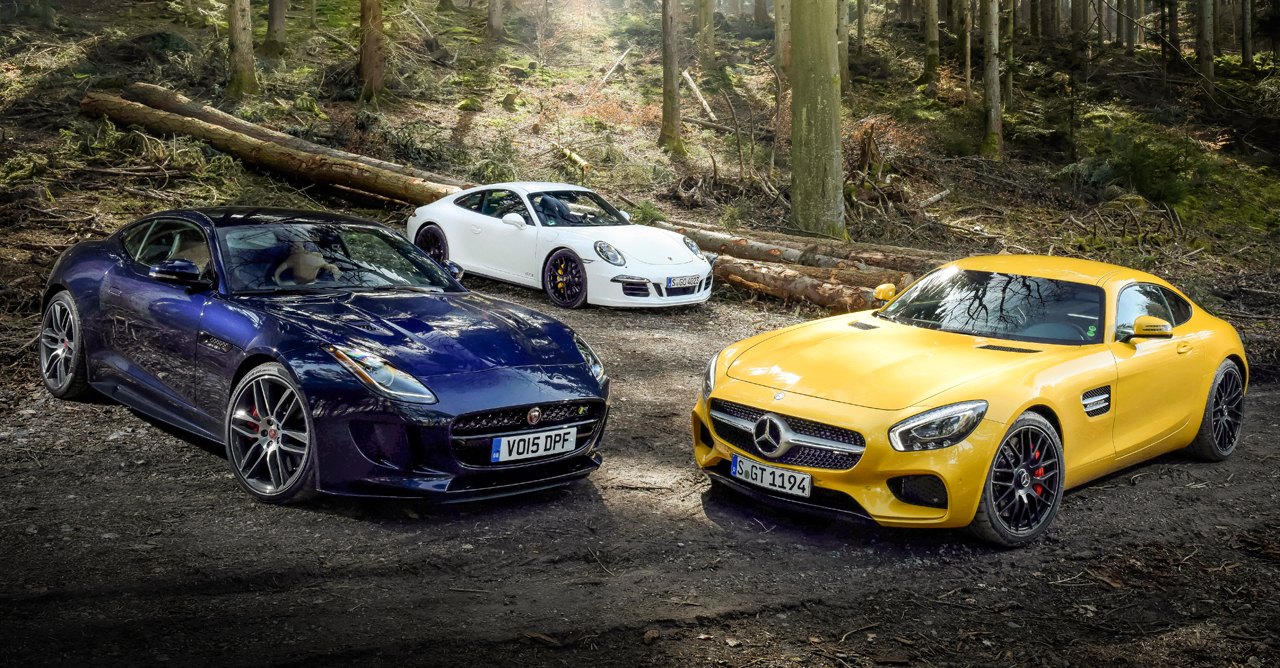 Sales of Large Sports Cars and Exotics fell by 5.5% in the first quarter of 2017, following a 10.4% decline in 2016. Total volume in this segment stood at 11,370 in Q1. And there’s not a lot of product news expected this year, so the decline is expected to last throughout the year. Then again, keep in mind the segment peaked at over 60,000 sales in 2015, when it almost doubled up in just 3 years time, so small declines after such an impressive growth curve are nothing to be ashamed of, especially on the lack of product news, as mentioned. We do welcome two newcomers to the segment compared to Q1 of last year, but both are still at the bottom of the ranking: the second generation Acura NSX and the all-new Ford GT.
Sales of Large Sports Cars and Exotics fell by 5.5% in the first quarter of 2017, following a 10.4% decline in 2016. Total volume in this segment stood at 11,370 in Q1. And there’s not a lot of product news expected this year, so the decline is expected to last throughout the year. Then again, keep in mind the segment peaked at over 60,000 sales in 2015, when it almost doubled up in just 3 years time, so small declines after such an impressive growth curve are nothing to be ashamed of, especially on the lack of product news, as mentioned. We do welcome two newcomers to the segment compared to Q1 of last year, but both are still at the bottom of the ranking: the second generation Acura NSX and the all-new Ford GT.
Highlights for 2016:
 After a 10% decline in 2016, segment leader Chevrolet Corvette continues its slow but steady decline with a loss of 8.9% in the first quarter of 2017. The ‘Vette still controls more than half the sales in this segmnt, so remains as dominant as its closest rival is in Europe.
After a 10% decline in 2016, segment leader Chevrolet Corvette continues its slow but steady decline with a loss of 8.9% in the first quarter of 2017. The ‘Vette still controls more than half the sales in this segmnt, so remains as dominant as its closest rival is in Europe.- That would be the Porsche 911, down 6.5% in Q1 after also losing 10% last year. At least the 20% loss in the second half of 2016 is now somewhat reduced, as that might have led us to conclude its decision for an all-turbo line-up has been a failure, at least in the US. Second case in point: the sharp declines of the turbocharged Cayman/Boxster duo in the small premium sports car segment. For now, we’ll give the 911 the benefit of the doubt, but we’ll keep a close eye on its progress for the rest of the year.
- The Jaguar F-Type gains share thanks to a 3.7% rise in sales, rebounding slightly from its 12% loss in 2016. It too will get a four-cylinder turbocharged engine, but the F-Type will keep the V6 and V8 as options, so even if the new base engine doesn’t catch on, it shouldn’t hurt the nameplate too much.
- The facelifted Mercedes-Benz SL still can’t hide its age and loses 18.4% of its sales. Fortunately, there’s quite a sizeable gap to the #5, the Mercedes-AMG GT, which loses almost a quarter of its volume as customers are awaiting the model’s facelift and the addition of the roadster version.
- As a result, the AMG GT is now under fire from the Bentley Continental GT, which gains more than 50% to recover from its loss of a third of its volume last year. Both models leapfrog the aging Maserati GranTurismo which does the exact opposite of the Bentley: it gained 46% in 2016 but loses 44% again in 2017 so far. Not surprising since this is already its 11th year on the market.
- The Audi R8 continues to improve after winning 49% last year, even though its first quarter sales were almost nonexistent in 2016 as the new generation hadn’t reached showrooms yet. It has passed the Nissan GT-R which received a minor facelift last year and gains 20%. The Dodge Viper also improves, by 29%, as buyers are lining up to grab the last few limited editions before production finally ends later this year.
 The only PHEV of the segment loses 10%, but the upcoming BMW i8 roadster should give the model a new boost later this year. Its hybrid rival Acura NSX is still in startup mode and should start to gain traction in the 2nd quarter.
The only PHEV of the segment loses 10%, but the upcoming BMW i8 roadster should give the model a new boost later this year. Its hybrid rival Acura NSX is still in startup mode and should start to gain traction in the 2nd quarter.- Ford is building just one GT per day for worldwide markets (the bulk will remain in the US), so don’t expect the model to start storming the charts as that’s not its purpose. It does however work brilliantly as a halo for the Ford brand, so it does exactly what it’s intended to do.
Clicking on the model name opens the sales data page for that model; clicking year in the legend turns the display for that year on/off


